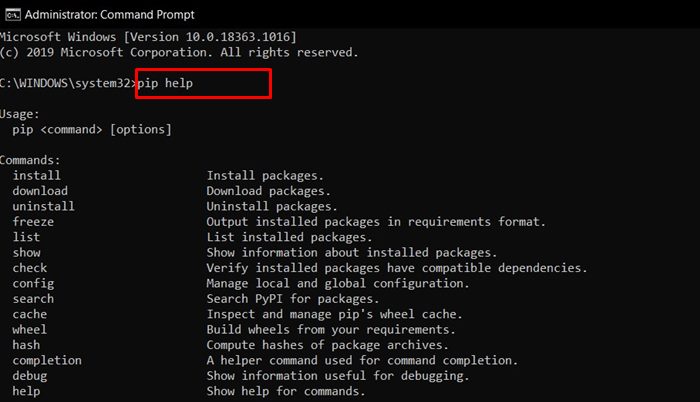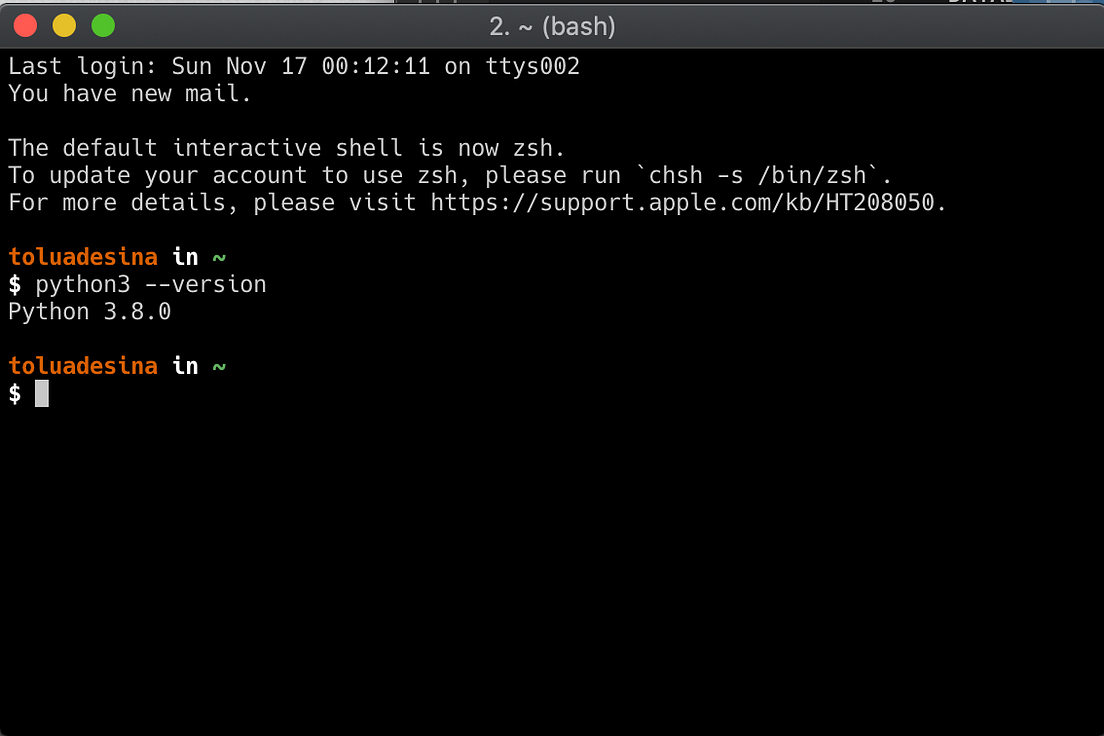[VIDEO] How To Install Pip Dockerfile, Here's the explanation!

Are you looking to improve your Python programming skills? If so, you're in luck � today we're going to talk about how to install PIP, the Python package installer. This handy tool makes it easy to manage your Python packages on Windows and Raspberry Pi.
What is PIP?
First things first, if you're not familiar with PIP, let's break it down. PIP stands for "Pip Installs Packages" or "Python Package Installer." It's a tool that simplifies the process of installing and managing external packages or libraries for Python.
What are the benefits of PIP?
Using PIP makes it easier to work with Python libraries and third-party packages, which can save you time and make your code more efficient. You can easily install, uninstall, and update packages with a single command, instead of having to go through the manual process of downloading, extracting, and configuring each package individually.
Preparation
Before we dive into the installation process, there are a few things you'll need to prepare. First, you'll need a working Python installation. If you're using Windows, you can download the latest version of Python directly from the official website. For Raspberry Pi, Python is pre-installed on most operating systems, but you can check your installation by typing the following command in your terminal:
python --version
If you see a version number displayed, you're good to go. If not, you'll need to install Python before proceeding.
Installation on Windows
Now that you have your Python installation set up, let's get PIP installed. The process is straightforward:
Step 1:
First, download the get-pip.py file, which is a script that installs PIP on your computer. You can download the file by right-clicking the link and selecting "Save link as..." in your browser.
Step 2:
Open a command prompt window and navigate to the directory where you saved the get-pip.py file. You can do this using the cd command.
Step 3:
Once you're in the directory, run the following command to install PIP:
python get-pip.py
This command will start the installation process, which should only take a few minutes. Once it's done, you should see a message confirming that PIP has been installed successfully.
Installation on Raspberry Pi
If you're using Raspberry Pi, the installation process is slightly different. Here's what you need to do:
Step 1:
Open a terminal window and run the following command to update your package lists:
sudo apt-get update
Step 2:
Once the update is complete, run the following command to install PIP:
sudo apt-get install python-pip
This command will download and install PIP on your Raspberry Pi. Once it's done, you should see a message confirming that PIP has been installed successfully.
Using PIP
Now that you have PIP installed, you can use it to manage your Python packages. Here are a few basic commands to get you started:
Installing Packages
To install a package using PIP, simply run the following command:
pip install package_name
Replace package_name with the name of the package you want to install. PIP will download and install the package and its dependencies automatically.
Uninstalling Packages
If you need to remove a package, you can use the following command:
pip uninstall package_name
Replace package_name with the name of the package you want to uninstall. PIP will remove the package and its dependencies from your system.
Upgrading Packages
If you need to update a package to a newer version, run the following command:
pip install --upgrade package_name
Again, replace package_name with the name of the package you want to update. PIP will download and install the latest version of the package.
Conclusion
Installing PIP is a simple process that can greatly improve your Python development experience. With PIP, you can easily manage your Python packages and libraries, saving you time and making your code more efficient. Whether you're working on Windows or Raspberry Pi, installing PIP is a must for any Python developer.
References:
Installing Pelican on Raspberry Pi
If you're using Raspberry Pi, you can follow this tutorial to learn how to install Pelican, a static site generator, using PIP.
Step 1:
Open a terminal window and run the following command to install Pelican:
pip install pelican
This command will download and install Pelican and all of its dependencies.
Step 2:
Once the installation is complete, you can use Pelican to generate static HTML pages from your content. For more information on how to use Pelican, check out the official documentation.

How to Install PIP For Python on Windows | PhoenixNAP KB
If you're using Windows and want to learn how to install PIP, check out this tutorial from PhoenixNAP KB.
Step 1:
Download the get-pip.py file by clicking on the link and then saving the file to your computer.
Step 2:
Open a command prompt window and navigate to the directory where you saved the get-pip.py file.
Step 3:
Once you're in the directory, run the following command to install PIP:
python get-pip.py
Follow the on-screen instructions to complete the installation.
If you are looking for How to Install PIP For Python on Windows | PhoenixNAP KB you've visit to the right web. We have 5 Images about How To Install Pip For Python On Windows | Phoenixnap Kb like How To Update Python On Mac Terminal - Dasiweb, Installing Pelican On Raspberry Pi and also How To Install Pip For Python On Windows | Phoenixnap Kb. Here it is:
How To Use Samloader To Download Ota Updates For Samsung Galaxy Phone
 getdroidroms.com
getdroidroms.com
pip install
Installing Pelican On Raspberry Pi
pip pi install sudo installing raspberry pelican installed verify installation everything complete after
How To Update Python On Mac Terminal - Dasiweb
 dasiweb.weebly.com
dasiweb.weebly.com
How To Install Pip For Python On Windows | Phoenixnap Kb
 phoenixnap.es
phoenixnap.es
How to use samloader to download ota updates for samsung galaxy phone. How to install pip for python on windows. Installing pelican on raspberry pi
Tags: #How To Install Pip For Python On Windows | Phoenixnap Kb,#How To Update Python On Mac Terminal - Dasiweb, Installing Pelican On Raspberry Pi,#How To Install Pip For Python On Windows | Phoenixnap Kb
Related post:
👉 How To Install Virtual Machine On Windows 10 Home Edition, Here's The Explanation!
👉 [FULL] How To Install Xapk App, This Is The Explanation
👉 [Complete] How To Install Pip Ubuntu 18.04, This Is The Explanation
👉 How To Install Pip Django- This Is The Explanation
👉 [VIDEO] How To Install Android X86 On Windows 10 ~ Here's The Explanation!
👉 How To Install Windows 10 On Android Device, See The Explanation!
Komentar
Posting Komentar